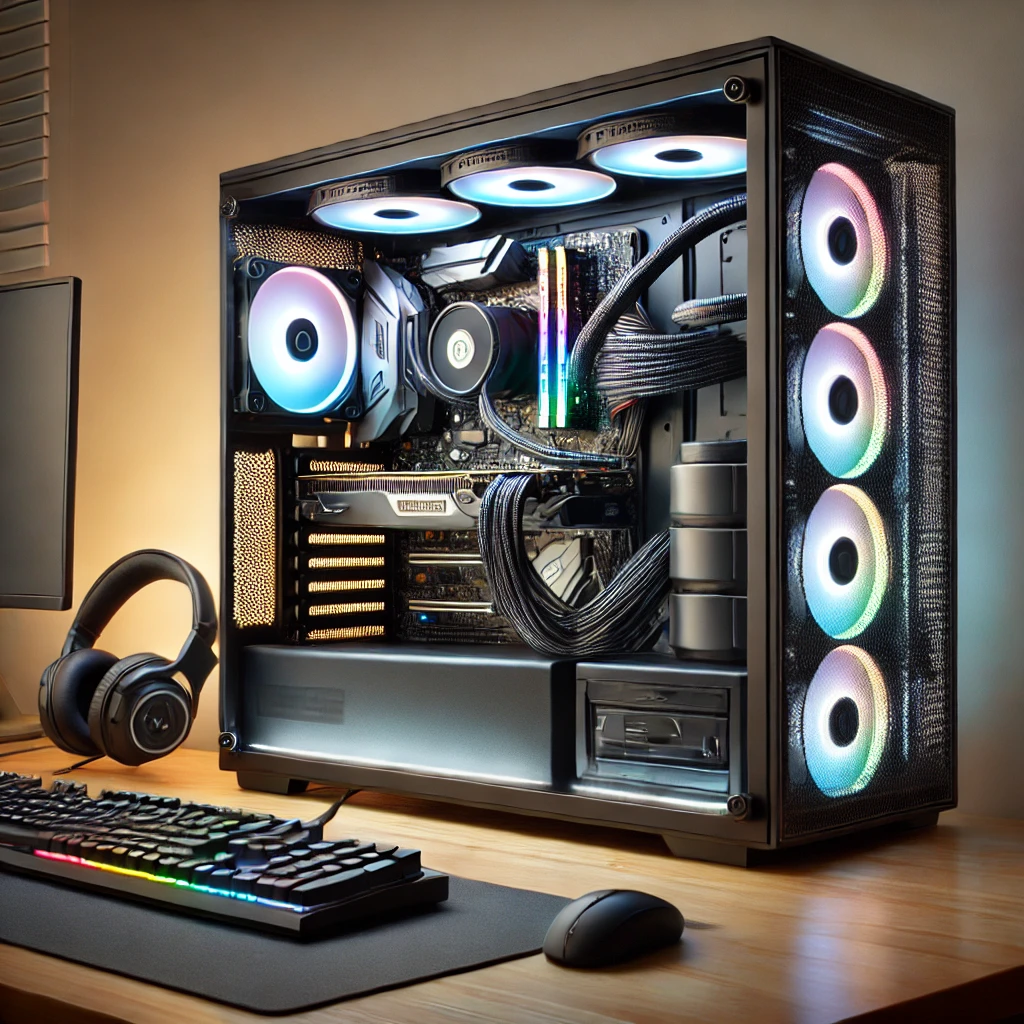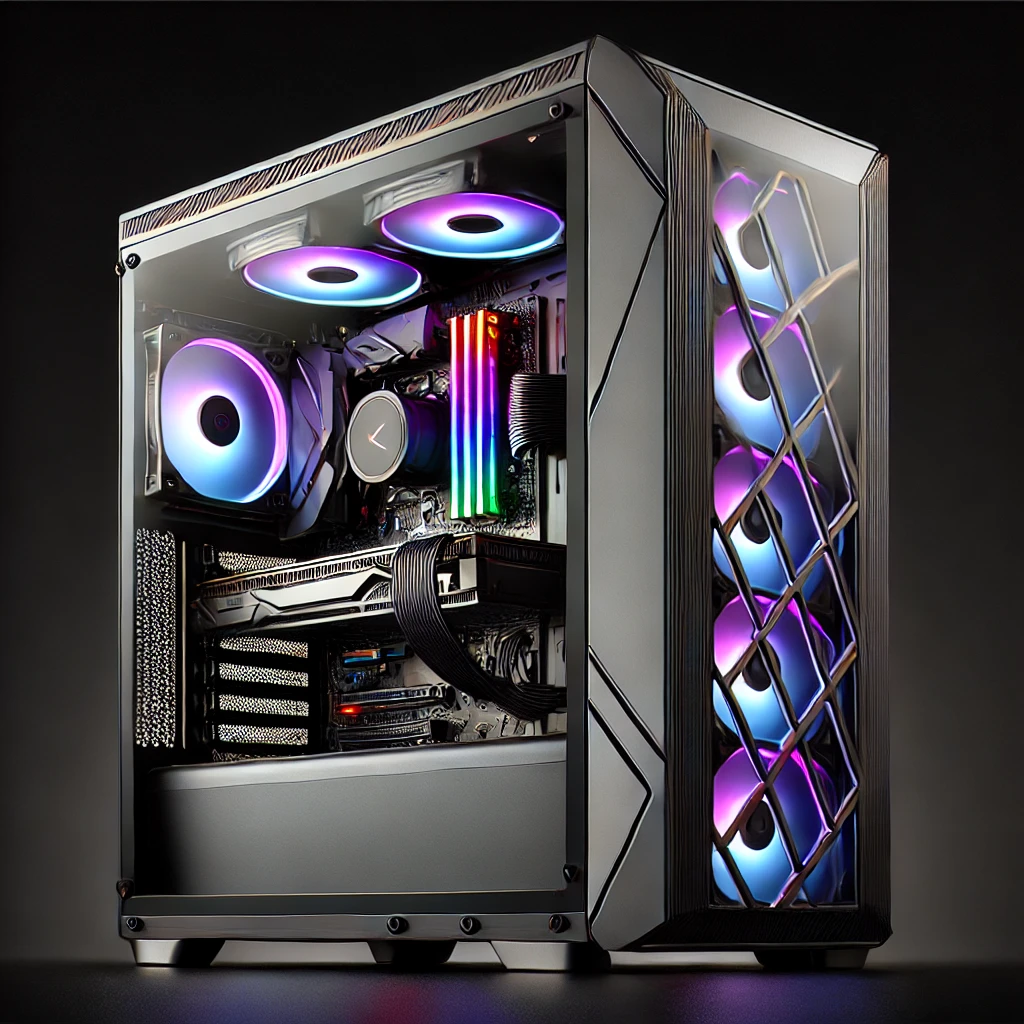Your cart is currently empty!

Whether you’re building a custom gaming PC or just want to optimize your current setup, cable management is one of those overlooked essentials that can make or break your rig’s performance and aesthetic. A clean, organized PC not only looks great, but it also helps improve airflow, reduces dust accumulation, and makes future upgrades a lot easier.
Here at Lithgeek, based in Lithgow Tech Services, we specialize in helping gamers and PC enthusiasts build their dream setups—including making sure your cables are out of sight and out of mind. So, let’s dive into some practical cable management tips that will help you take your gaming rig to the next level.
1. Plan Before You Plug
Before you start plugging in cables, take a step back and plan. Visualize where everything will go and how cables will run from point A to point B. When building a custom gaming PC, it’s crucial to know where the power supply, hard drives, and fans are located to minimize excess cable slack. Pre-planning ensures you don’t have to redo everything later.
Pro Tip: Invest in a modular power supply. These allow you to use only the cables you need, reducing clutter from the start.
2. Use Cable Ties and Velcro Straps
Once your cables are in place, secure them. Cable ties and Velcro straps are affordable and work wonders in keeping things tight and organized. Velcro ties are particularly useful because they are reusable, which is great if you ever need to make changes to your setup later.
Bundle similar cables together—USB cables with other USB cables, power cables with power cables—to avoid tangling and make everything easier to find.
3. Use the Right Tools: Cable Management Accessories
There’s a wide range of cable management accessories designed to make your life easier. From adhesive cable clips to cable sleeves, these small investments can really clean up your setup. Adhesive clips can help route cables along the back of your desk or behind your monitor. Cable sleeves are perfect for keeping several cables together in a neat bundle.
4. Route Cables Behind the Motherboard Tray
Many modern PC cases come with a hidden section behind the motherboard tray specifically designed for cable management. This is a great spot to hide power cables and other wires. Use this space to route everything out of sight while still keeping it functional and organized.
5. Shorten Your Cables
Excess cable length is often the biggest cause of messes. If you have too much slack, don’t just let it hang around behind your desk. Use twist ties or cable ties to bundle the slack and tuck it away. Some power supplies come with extra-long cables that may not be necessary for smaller cases. Custom-length cables are also an option if you want a cleaner, more permanent solution.
6. Avoid Crossing Power and Data Cables
When power and data cables cross paths, it can create interference that affects performance, especially with audio cables or network connections. If possible, keep your power cables and data cables on opposite sides of your PC case or desk to avoid any signal interference.
7. Label Your Cables
One final tip that might seem excessive but will save you headaches later: label your cables. Use small, color-coded stickers or tags to identify which cable belongs to which device. This makes it easier to swap out components or peripherals without unplugging the wrong thing.
Why Cable Management Matters for Gamers
A well-managed PC isn’t just about aesthetics. Poor cable management can restrict airflow in your case, leading to higher temperatures and ultimately affecting your system’s performance. Games like “Cyberpunk 2077” (developed by CD Projekt Red, here’s their page) or “Starfield” (by Bethesda, check them out here) require a lot of power, and any overheating could lead to crashes or system instability.
Minimum System Requirements for Cyberpunk 2077:
- OS: Windows 10
- CPU: Intel Core i5-3570K or AMD FX-8310
- GPU: NVIDIA GTX 780 3GB or AMD RX 470
- RAM: 8GB
Minimum System Requirements for Starfield:
- OS: Windows 10 (64-bit)
- CPU: AMD Ryzen 5 2600X or Intel Core i7-6800K
- GPU: AMD Radeon RX 5700 or NVIDIA GeForce GTX 1070 Ti
- RAM: 16GB
Get Custom Gaming PCs and Help with Cable Management at Lithgeek
At Lithgow Tech Services, we pride ourselves on building custom gaming PCs that not only perform at the highest level but also look the part. Our experienced team can help you choose the best parts, assemble your system, and handle all the tricky cable management so you can focus on what matters—gaming!
Drop by our shop at 53 Main Street, Lithgow, or check out our online store for parts, accessories, and more. Whether you’re upgrading to a beastly gaming rig or need help with cable management on your current setup, we’ve got you covered.
Discover more from LithGeek Custom Gaming Computers
Subscribe to get the latest posts sent to your email.
by
Tags:


